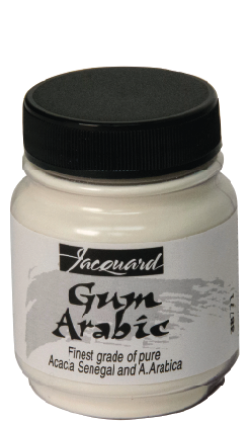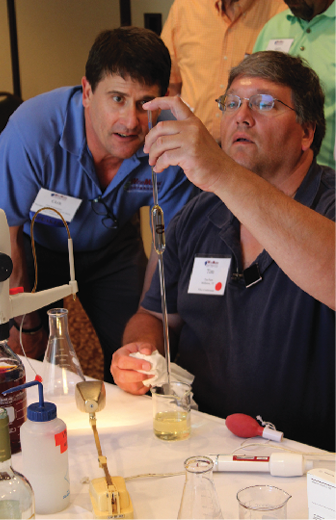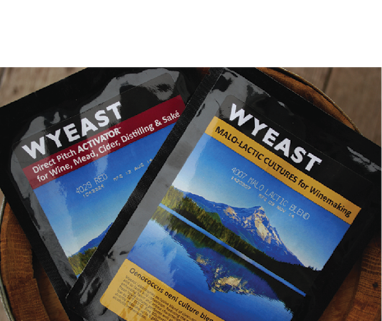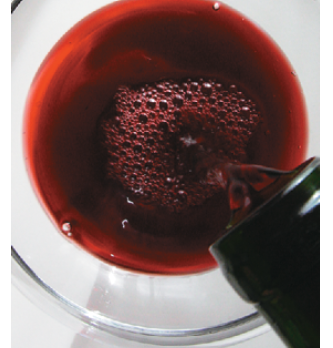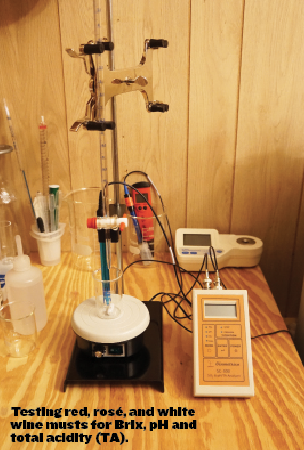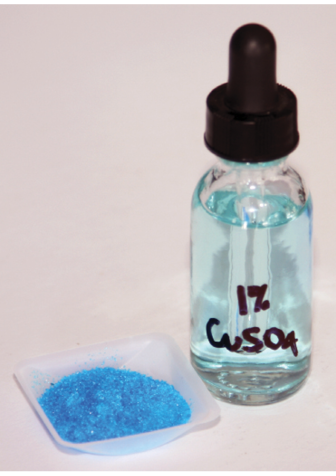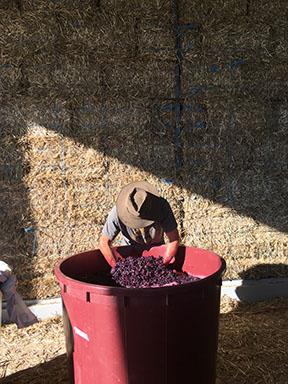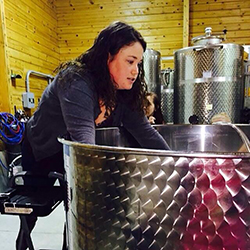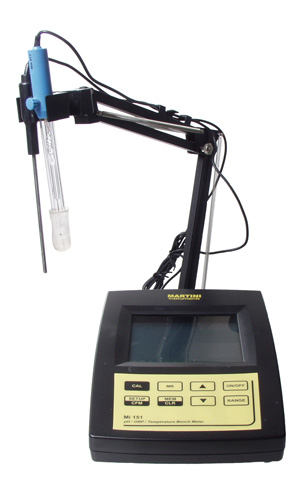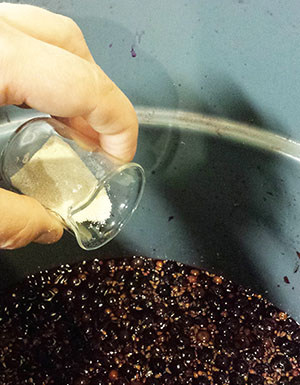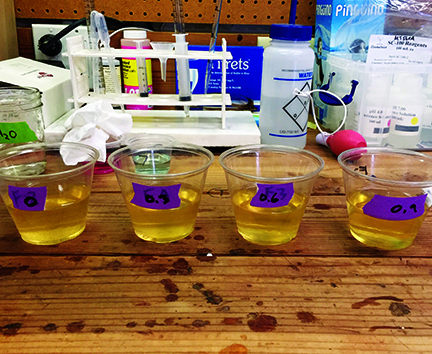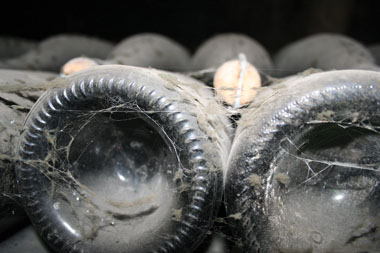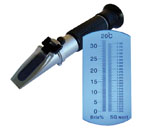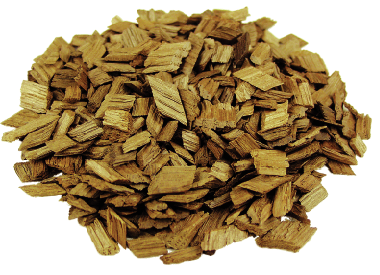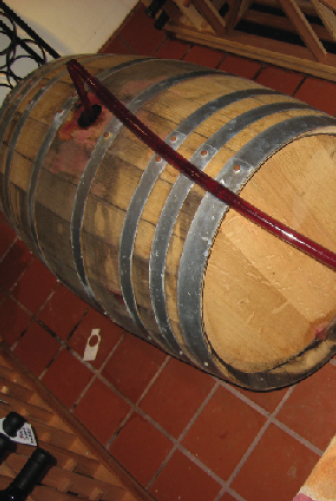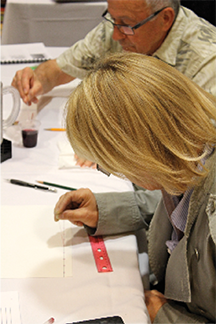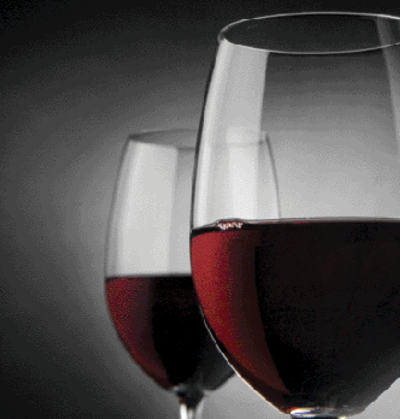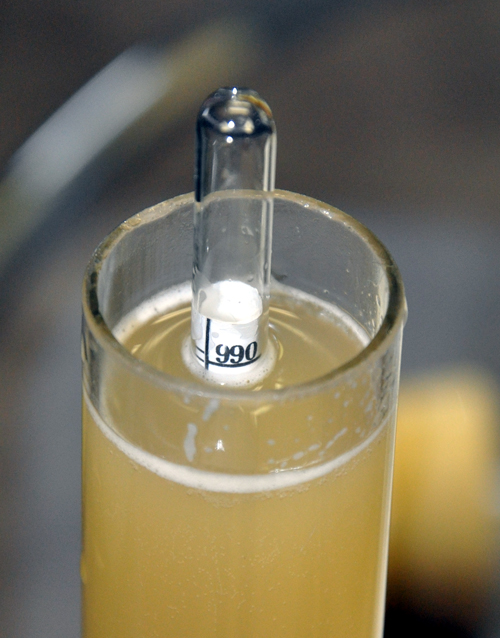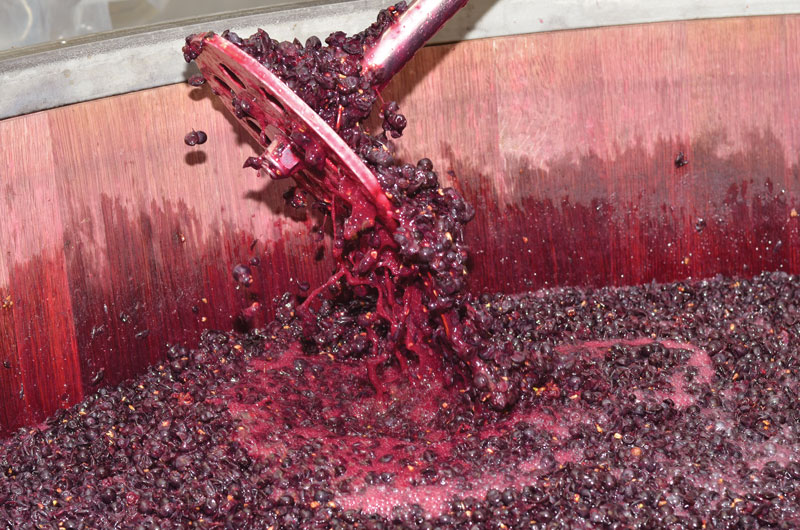Topic: Winemaking Science
Gum Arabic: Winemaking’s Secret Weapon
Gum arabic can do so many great things for your wines, from improving mouthfeel, making a thin wine taste fuller bodied, rounding out rough edges of grape tannins, increasing persistence of bubbles in sparkling wine, prolonging the action of metatartaric acid, to treating iron-induced oxidation problems.
The Relationship of pH and Acid in Winemaking
Home winemakers know pH and acid are related when they make wine. Beyond that, the details sometimes get a little fuzzy. Shedding some light on how these important parameters are — and
Using Outside Labs to Run Analysis Tests on your Wine
There is lots of information out there about how to run various juice and wine analytical procedures at home if you want to do that. If you do not want to run
Co-Inoculation with Wine Yeasts and Bacteria
Ask 5 winemakers and you may get 6 opinions about co-inocculation. But what does the science say?
Oxygen Reduction in Winemaking
Oxidation gets a lot of attention in winemaking — and it should! WineMaker magazine has covered oxidation issues from several different angles over the past few years. While some presence of oxygen
Year in a Life of a Wine: Part III (Testing & Adjusting)
In the third installment of our year-long series about how homemade wine is made using home-grown grapes in Upstate New York, we check in on batches of red, white, and rosé wines happily fermenting away.
Volatile Sulfur Compounds and Hydrogen Sulfide in Wine
If you have ever encountered volatile sulfur compounds in wine, of which hydrogen sulfide is the most common, you know how repulsive the smell can be. Learn the causes and solutions.
Wines, Naturally
Do you know the difference between organic, biodynamic, and natural wines? Learn what differentiates each term, plus ways to cut down on the chemicals in your winemaking process.
Home Wine Lab Testing: Tips from the Pros
Laboratory equipment for winemakers can be fiscally daunting, especially for beginning winemakers. That doesn’t mean that vital testing should be avoided. We asked two experts about ways to optimize your experience with submitting samples for analysis.
Impact of Oxygen on Winemaking
Oxygen’s presence or absence at the various stages of winemaking can have extraordinarily important and lasting effects on what our wines taste like. Too much and you risk oxidation damage, too little and you risk reduction stink. The effects of oxygen on wine, much more so with red wines, may be the most complex and least understood part of the winemaking process.
Monitoring & Adjusting pH
pH greatly affects the taste of wine as well as microbial stability. It can make the difference between drinking the wine or pouring it down the drain. Make sure you know when it should be analyzed and make the necessary adjustments.
Enzymes for Hobbyists
When pioneers of winemaking like Louis Pasteur or André Tchelistcheff are mentioned, James B. Sumner is often overlooked. Nonetheless, this Nobel-prize-winning chemist (1946) set in motion the entire scientific field for today’s
Mastering Wine Acid Balance
Sometimes the acidity of your grapes, juice, or wine will need to be adjusted. Learn some of the finer details surrounding how, and when, to make those acid adjustments to your wine.
Make Wines to Age
It starts with great fruit, but to make age-worthy red wine the winemaker must also consider acidity, tannins, sulfur dioxide, oxygen, cellaring conditions, and how all of these factors (and others) relate to each other.
In the Wine Lab
As a home winemaker, testing your wine for certain things like Brix and pH are critical, while other tests are optional. Get to know the equipment you really need, what the equipment does, and how much it costs.
Tannin Chemistry
Soft, silky, velvety, youthful, puckery, aggressive, harsh, bitter, astringent: These are all adjectives used in winespeak to describe the many taste sensations from tannins in red wines. Learn about the science behind them
Oak Barrel Chemistry
The benefits of fermenting or aging wine in toasted oak barrels are indisputable and unmatched by any other type of wood. Not only do oak compounds impart aromas and flavors as well
The Home Wine Laboratory
Wine analysis can be expensive, but it is worth it. It helps you to understand what you are doing during production, aids in the diagnosis of problem wines, and improves your chances of success. There are commercial laboratories that will do any analysis you’d like, for a fee, but it takes time to get the results back. For home winemakers who want those numbers at their fingertips, one option is to set up a home wine lab.
The Biology of Malolactic “Bugs”
An insider’s view of the more technical aspects of malolactic fermentation (MLF).
I made some wine using coffee as an ingredient and I was wondering what happens to the caffeine during fermentation?
Coffee wine, eh? I’ve heard of using strong black tea as a tannin additive and of using coffee in brewing recipes for a super-charged stout but I’ve never heard of making coffee
What is your opinion of enzymes added to wine to improve color, mouthfeel, and flavor?
Lallzyme EX is a blend of enzymes that helps break down the plant cells in grapes. This mix of pectinase, cellulase and hemicellulase is introduced at the crusher or right at the
The Phenol Phenomenon
A saturated, dark-ruby colored, full-bodied wine with a velvety texture and round mouthfeel, oodles of blackberry aromas and oak flavor overtones with just a hint of spiciness, all with a persistent, memorable
Your Home Wine Lab
Sooner or later, most serious winemakers conclude that it isn’t good enough to simply follow a recipe blindly. That’s a bit too much like painting-by-numbers. The expression of one’s own skill and
